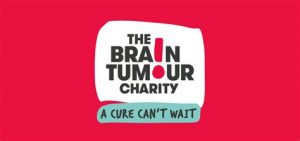Every year in the United States, approximately 12,000 people are diagnosed with Glioblastoma Multiforme (GBM), an extremely aggressive and malignant brain tumor that originates from the glial cells of the brain. For the vast majority of people, sadly, a GBM diagnosis is equivalent to a death sentence. One of the reasons Glioblastoma tumors are so deadly is because they often form de novo, meaning they originate as a grade IV cancer. According to thebraintumourcharity.org, “The average survival time is 12-18 months – only 25% of glioblastoma patients survive more than one year, and only 5% of patients survive more than five years.”
But help may be on the way with THC and CBD, the central active ingredients in marijuana, playing a key role. Sativex, the cannabis oral spray containing THC and CBD concentrates, is being investigated by researchers at Leeds University, led by Professor Susan Short, and funded by The Brain Tumour Charity, which is also seeking financial support for the research.
Short is optimistic, stating, “We think that Sativex may kill glioblastoma tumour cells, and that it may be particularly effective when given with temozolomide chemotherapy…so it may enhance the effects of chemotherapy treatment in stopping these tumours growing, allowing patients to live longer. That is what we want to test in the study.”
Sativex appears to directly impact the glioblastoma tumors due to receptor cells that are specific to cannabinoids, making them a targeted treatment. “Glioblastoma brain tumours have been shown to have receptors to cannabinoids on their cell surfaces, and laboratory studies on glioblastoma cells have shown these drugs may slow tumour growth and work particularly well when used with temozolomide,” said Short.

According to clinicaltrialsarena.com, “Sativex is a whole plant medicinal cannabis extract [currently] indicated for the relief of multiple sclerosis (MS) symptoms and the treatment of severe neuropathic-related cancer pain,” in the UK. As such, it has properties that will also alleviate the pain associated with cancer while simultaneously targeting the GBM tumor. GW Pharmaceuticals, who makes Sativex, states, “Sativex® is to be administered as an oromucosal spray, whereby the active ingredients are absorbed in the lining of the mouth, either under the tongue or inside the cheek.”
This oromucosal route has significant advantages over the intravenous route. Jie Zhang of the Department of Anesthesiology, University of Utah, Salt Lake City, writes, “Because the oral mucosa is highly vascularised, drugs that are absorbed through the oral mucosa directly enter the systemic circulation, bypassing the gastrointestinal tract and first-pass metabolism in the liver” . . . resulting “…in rapid onset of action via a more comfortable and convenient delivery route than the intravenous route.”
Another benefit of the oromucosal approach is that “When the cannabinoids in Sativex connect to the endocannabinoid system, they are not destroyed by the metabolic hormones as quickly as the natural cannabinoids.” This means that they are active for longer and therefore provide relief for longer. Moreover, THC has been shown to be “antiemetic in people undergoing chemotherapy,” meaning people taking Sativex will likely find their nausea at least partially alleviated by Sativex.
All of these benefits are creating hope in the medical community that treats GBM, as well as charities, especially The Brain Tumor Charity. The Brain Tumour Charity’s Interim Chief Executive David Jenkinson said, “We hope this trial could pave the way for a long-awaited, new lifeline that could help offer glioblastoma patients precious extra months to live and make memories with their loved ones. We know there is significant interest in our community about the potential activity of cannabinoids in treating glioblastomas, and we’re really excited that this world-first trial here in the UK could help to accelerate these answers.”
Recent research into the nature of cannabinoids may shed some light on the mechanisms at play in the complex process of autophagy, which is the “consumption of the body’s own tissue as a metabolic process.” According to the National Institutes of Health, autophagy plays “a key role in preventing diseases such as cancer, neurodegeneration, cardiomyopathy, diabetes, liver disease, autoimmune diseases and infections.”
Because autophagy is a cellular process that “captures and degrades damaged proteins and organelles in lysosomes,” cannabinoids could potentially serve as a tool for scientists to not only slow the growth of cancer tumors but also eventually eliminate them completely. Essentially, cannabinoids potentiate autophagy, thus catabolically “eating” the cancer cells.
This research into the effects of cannabinoids on autophagy is just the beginning of scientific investigations into effective treatments for brain cancer. Because right now, there is relatively little doctors can offer to reverse the devastating consequences of GBM. As Short puts it, “Even with surgery, radiotherapy and chemotherapy, nearly all of these brain tumours re-grow within a year, and unfortunately there are very few options for patients once this occurs.”

And beyond the present suffering wrought by GBM, there is an alarming trend with regard to the incidence rate of this cancer. Dr. Neil Grech, Department of Internal Medicine at Mater Dei Hospital, in Malta, found that the incidence of GBM is steadily on the rise. Grech and his colleagues posit the increase is attributable to developments in neuroimaging availability, air pollution, and non-ionizing radiation, especially the type emitted by mobile devices. Regardless of the cause, time is always of the essence due to the widespread morbidity associated with GBM. The key, of course, is to raise money for continued research.
As Tom Daley, the teenage British diving champion, put it so eloquently after his father passed away from brain cancer, “We are reaching out to all you individual heroes and supporters to help fund this groundbreaking trial. When you donate, you’ll receive a link for your social media badge of honor. Join our community; spread the word and help us pave the way to beating brain tumours.”
Meanwhile, Sativex is not approved in the United States, so positive developments from the current British trials may be a catalyst for change.
If you wish to donate to The Brain Tumor Charity to support the trials with Sativex, click on this link.
At Newsweed.com, we adhere to three simple principles: truth, balance, and relatability. Our articles, podcasts, and videos strive to present content in an accurate, fair, yet compelling and timely manner. We avoid pushing personal or ideological agendas because our only agenda is creating quality content for our audience, whom we are here to serve. That is why our motto is ”Rolling with the times, straining for the truth.”
Your opinion matters. Please share your thoughts in our survey so that Newsweed can better serve you.
Charles Bukowski, the Los Angeles beat poet that captured the depravity of American urban life once said, “There is something about writing poetry that brings a man close to the cliff’s edge.” Newsweed is proud to stand in solidarity and offer you a chance to get close to the cliff’s edge with our first Power of Poetry Contest. Are you a budding bard, a versatile versifier, a rhyming regaler? Do you march to the beat of iambic pentameter, or flow like a river with free verse? If so, here’s your opportunity to put your mad poetic chops to the test. Enter our poetry contest for bragging rights and an opportunity to win some cash!






